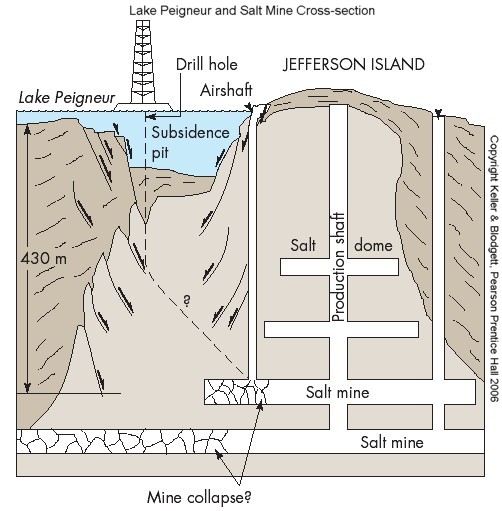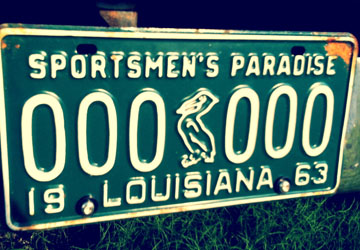 |
| River flowing backwards |
Concluding that something had gone terribly wrong, the men on the rig cut the attached barges loose, scrambled off the rig, and moved to the shore about 300 yards away. Shortly after they abandoned the $5 million Texaco drilling platform, the crew watched in amazement as the huge platform and derrick overturned, and disappeared into a lake that was supposed to be shallow.
One explanation is that a miscalculation by Texaco regarding their location resulted in the drill puncturing the roof of the third level of the mine. This created an opening in the bottom of the lake. The lake then drained into the hole, expanding the size of that hole as the soil and salt were washed into the mine by the rushing water, filling the enormous caverns left by the removal of salt over the years. The resultant whirlpool sucked in the drilling platform, eleven barges, many trees and 65 acres (260,000 m2) of the surrounding terrain. So much water drained into those caverns that the flow of the Delcambre Canal that usually empties the lake into Vermilion Bay was reversed, making the canal a temporary inlet.
Meanwhile, up on the surface, the tremendous sucking power of the whirlpool was causing violent destruction. It swallowed another nearby drilling platform whole, as well as a barge loading dock, 70 acres of soil from Jefferson Island, trucks, trees, structures, and a parking lot. The sucking force was so strong that it reversed the flow of a 12-mile-long canal which led out to the Gulf of Mexico, and dragged 11 barges from that canal into the swirling vortex, where they disappeared into the flooded mines below
There were no injuries and no human lives lost. No official blame for the miscalculation was ever decided, because all of the evidence was sucked down the drain. Days after the disaster, once the water pressure equalized, nine of the eleven sunken barges popped out of the whirlpool and refloated on the lake's surface.



